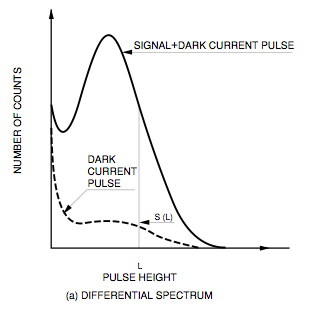
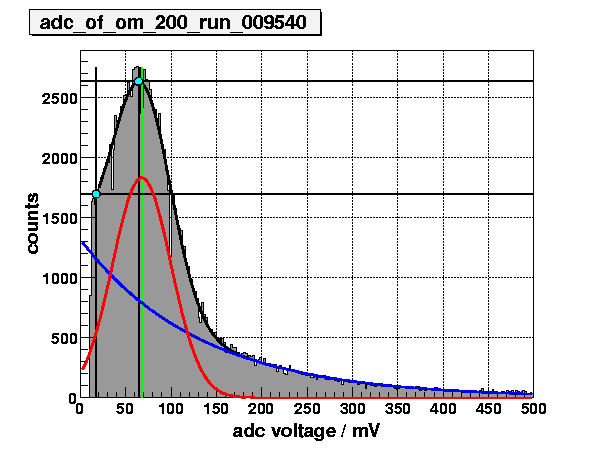
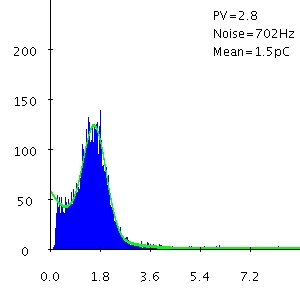
John Kelley, UW-Madison, 26 March 2007
We are familiar with the pulse height / charge distributions for AMANDA OMs and IceCube DOMs — these are often fit by an exponential + Gaussian, with the latter centered at 1 PE (by definition):
 |
 |
 |
Figure 1: Pulse height / charge distributions, from left to
right:
"theoretical" [1], AMANDA OM 200, and IceCube
DOM 21-36 ("Glycerol").
The low-amplitude region of the distribution is, according to Hamamatsu, mostly noise [2]. We know, however, that low-amplitude pulses can also arise from imperfect amplification of an SPE from the photocathode — for example, if the electron misses the first dynode.
In an experiment, in practice we eliminate most of the low-amplitude pulses by setting a threshold in the valley of the distributions in figure 1. However, for simulation purposes, we need to decouple the aforementioned effects to understand the response of our PMTs to an SPE, because we know a priori when we simulate this case, and we need an accurate PDF from which to sample our charges / amplitudes.
More precisely, we need the probability distribution function P(charge | SPE), whereas we typically measure P(charge | amplitude > threshold).
It is, however, possible to measure the low-amplitude response by using an external 1 PE light source which triggers the capture window of a DOM, and then by subtracting off the distribution obtained in the same way, but with the light source off. Specifically, we have made the following measurement:
Using ATWD channel 0 at a high sampling speed allows excellent charge resolution. We find the following charge distribution at 1e7 gain for LED on/off states:
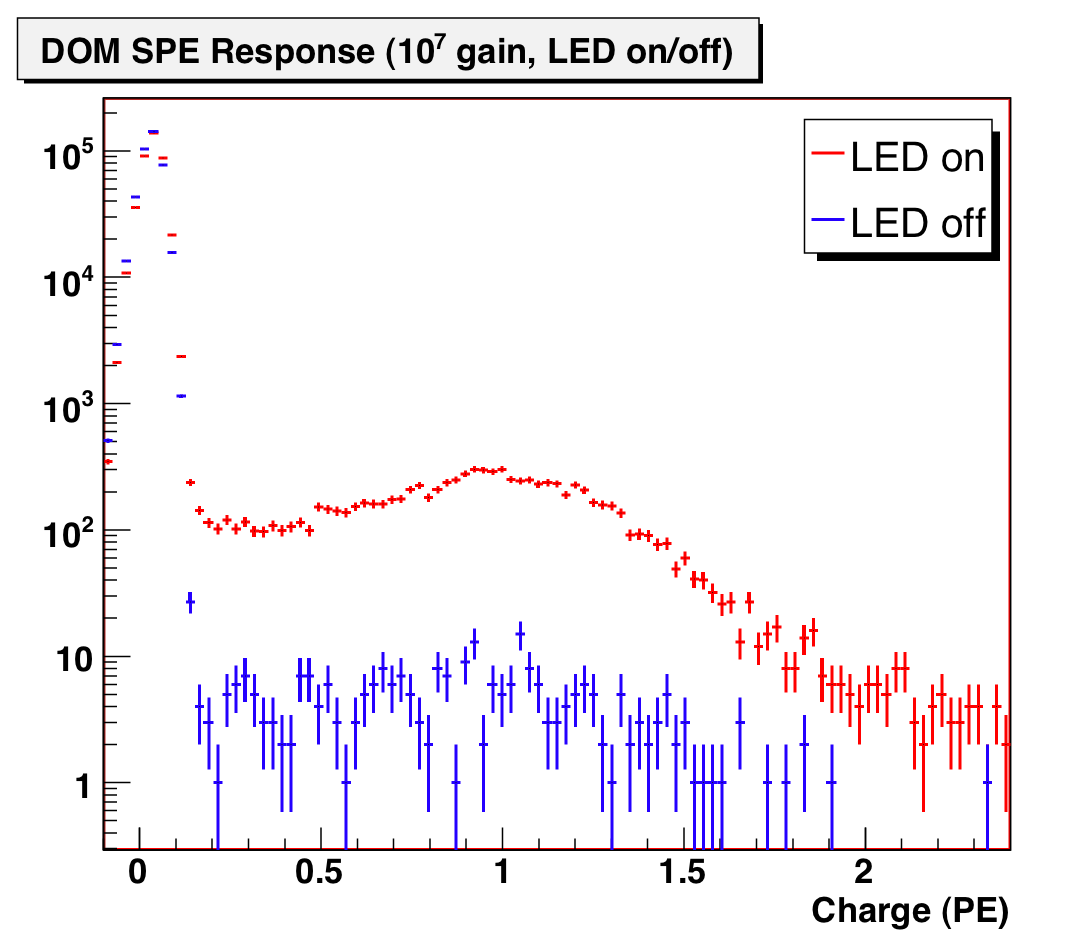
Figure 2: DOM response to mainboard LED (both on and off states) at 1e7 gain, -25C.
At 10^7, non-random noise in the waveform (due mostly to imperfect baseline slope calibration) dominates below 0.15 PE, so we are unable to fit this region. However, the exponential component fit from Q>0.15 PE is not very steep. Subtracting one from the other, we find the follow as the SPE response above 0.15 PE:
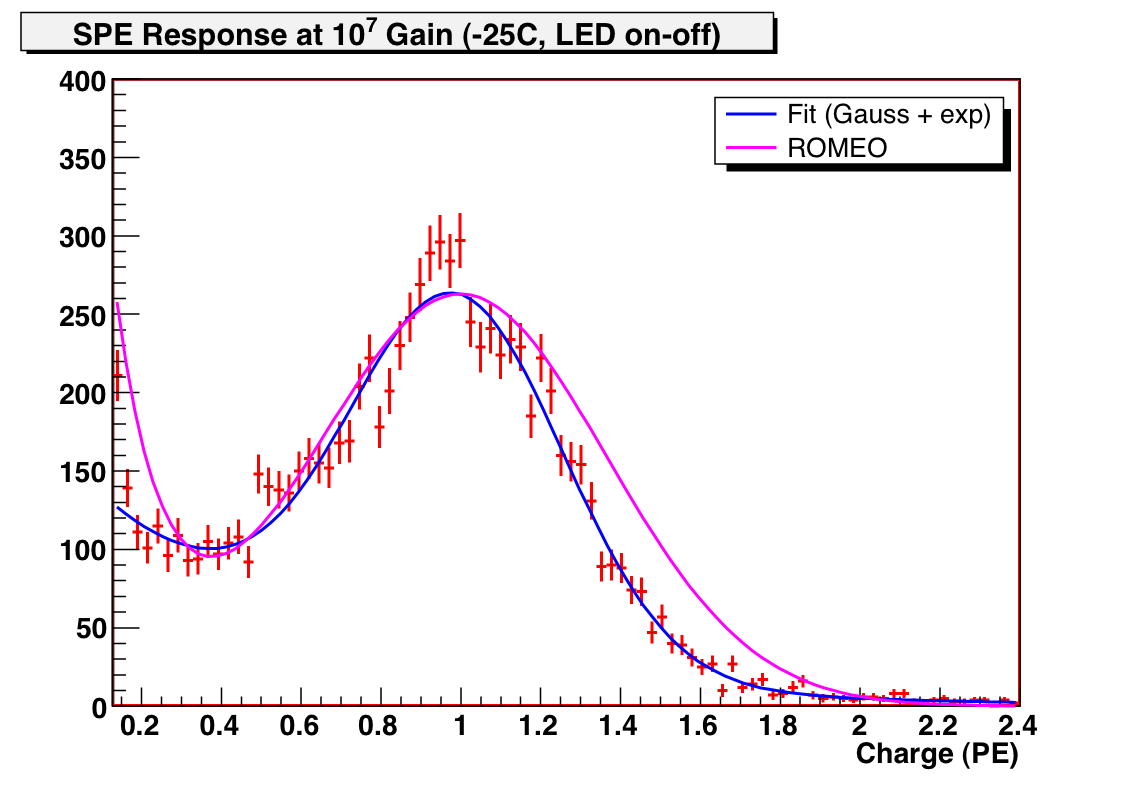
Figure 3: SPE Response of DOM above 0.15 PE, with ROMEO model
overlaid.
Exponential component is not very steep in the 0.15-0.5 PE region,
but there is a hint of steeper component in last data point.
With the fit above, the fraction of pulses below 0.20 is ~11%, compared to 23% in the ROMEO model.
To understand the low-amplitude behavior, we increase the gain to 5x10^7. This allows reliable charge determination for pulses with Q < 0.10 PE:
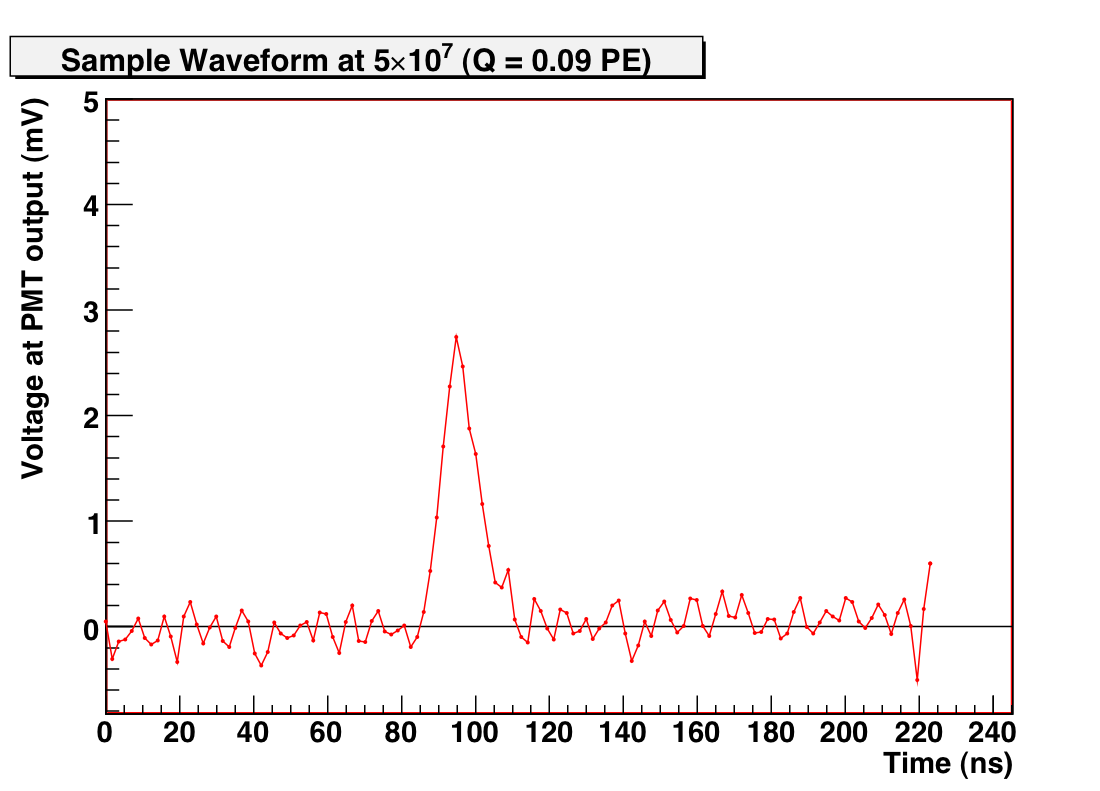
Figure 4: Sample waveform of small charge (Q = 0.09 PE) at 5e7 gain (calibrated ATWD ch0).
We find that there is a steep exponential component below Q = 0.15 PE. This is demonstrably part of the SPE response, and not noise, by examining the timing information of these low-amplitude pulses — we find that they occur when the SPE response is expected:
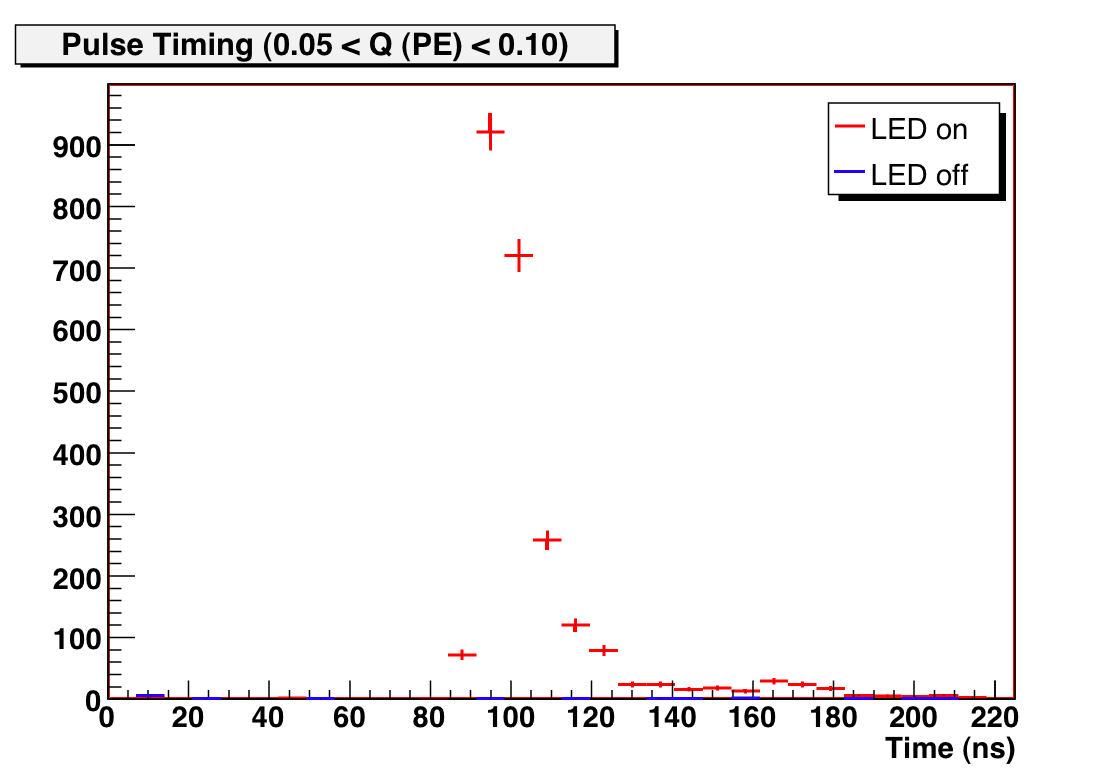 |
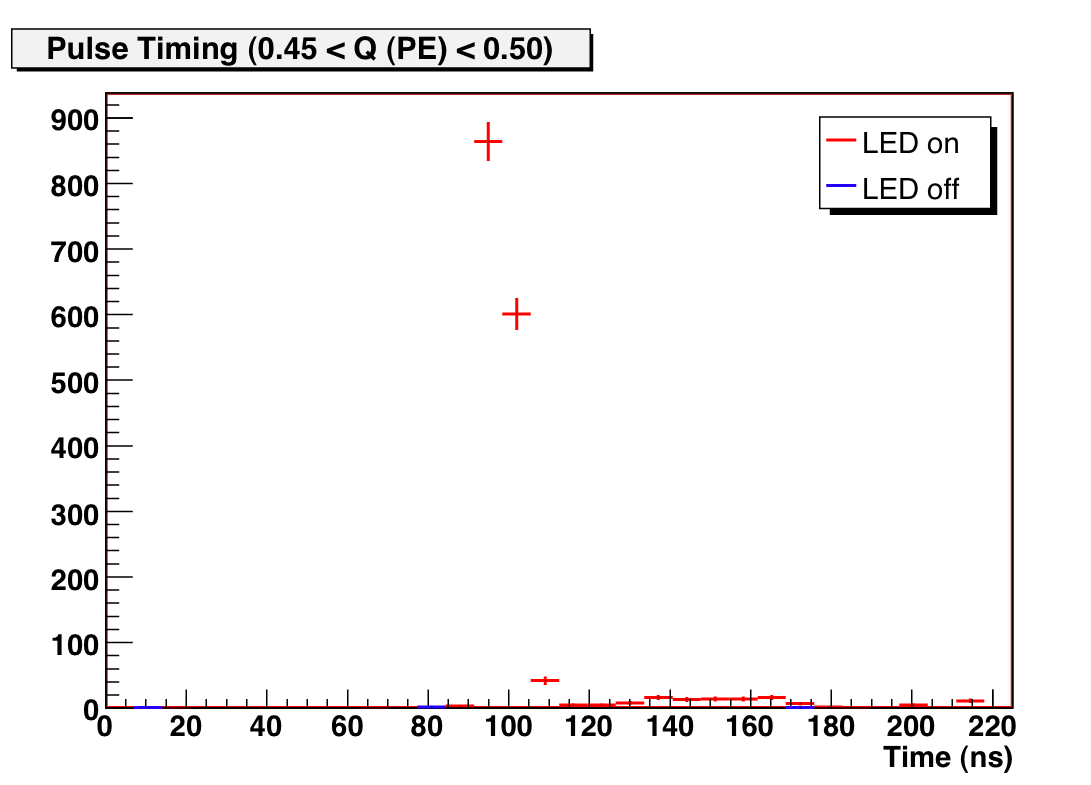 |
Figure 5: Timing information at 5e7 gain of pulses of various
charge.
~100ns is the timing expected for a fully amplified SPE.
The total response is fit best by a Gaussian plus two exponentials:
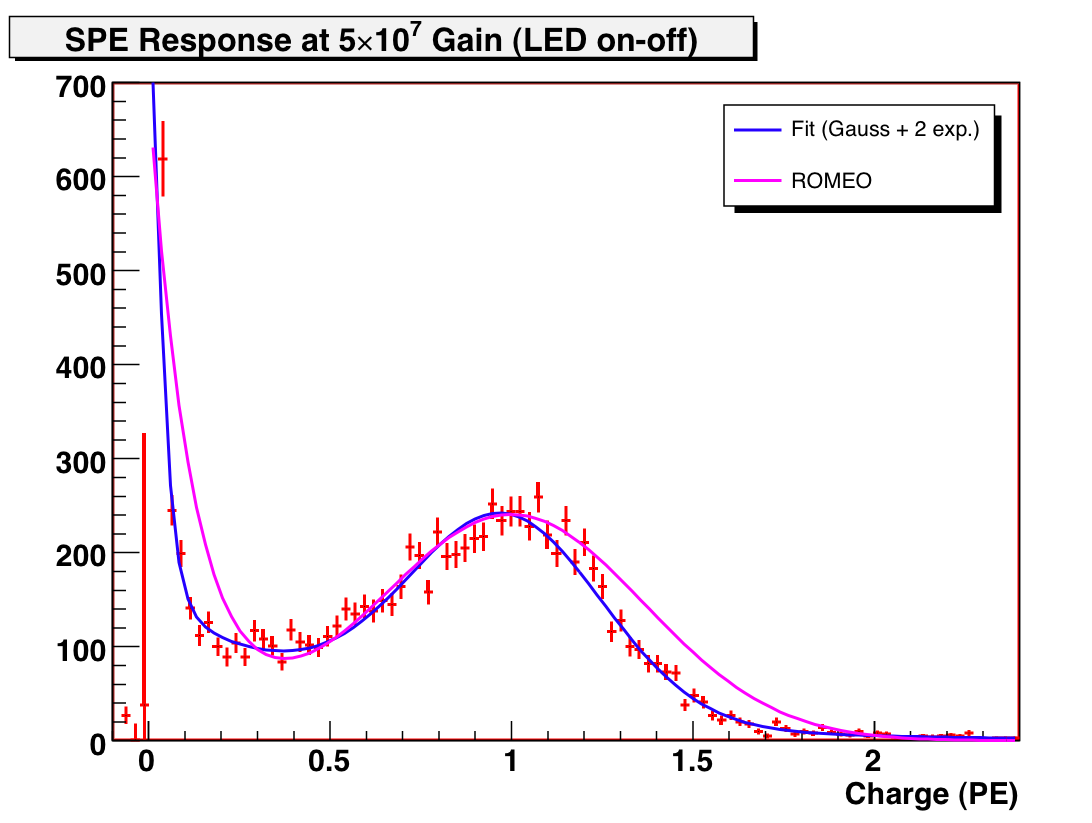
Figure 6: DOM SPE response at 5e7 gain, with ROMEO model overlaid (2% SPE occupancy).
With this fit, the fraction of the response below 0.2 PE is 22%, compared to 23% in the ROMEO model.
UPDATE: At higher SPE occupancy (25%), the flatter exponential component has been significantly enhanced due to MPE contamination:
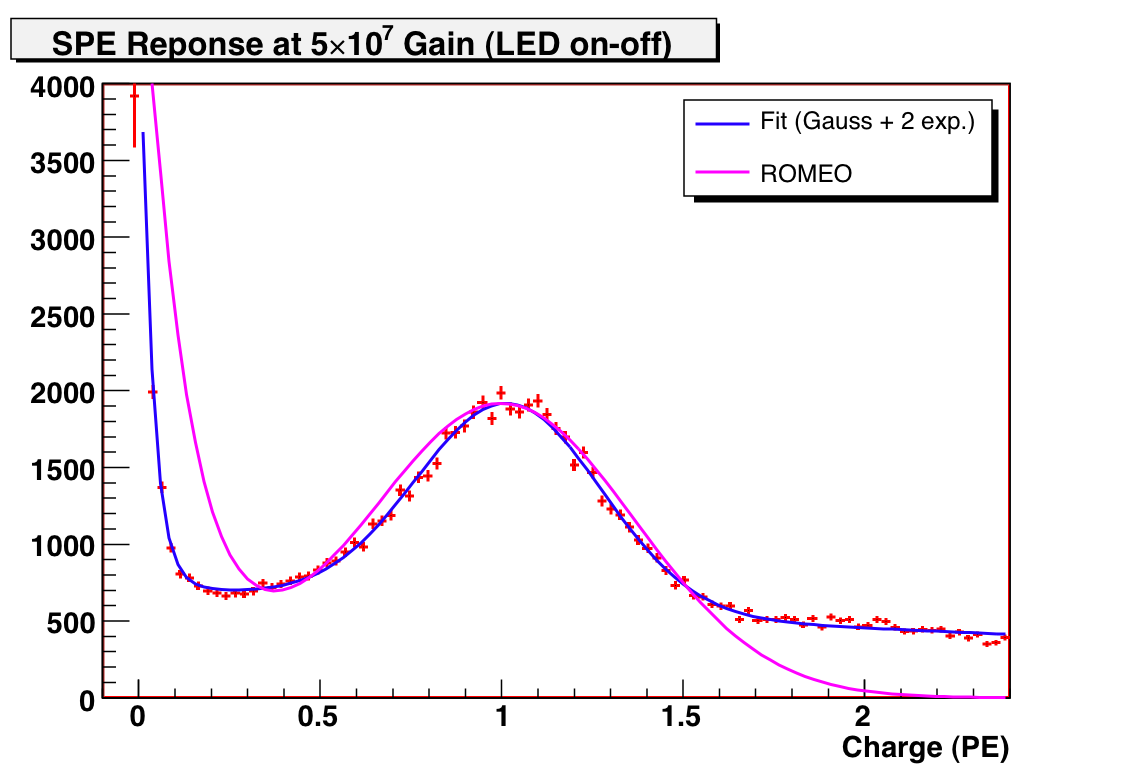
Figure 7: DOM SPE response at 5e7 gain, with ROMEO model overlaid (25% SPE occupancy).
This suggests that perhaps the low-amplitude "shoulder" of the Gaussian, which dominates between 0.15 and 0.4 PE, could still be MPE contamination (poorly amplified!), but this is unconfirmed.
The width of the Gaussian portion of the SPE response is easy to measure for large ensembles of OMs and DOMs. For AMANDA OMs, we have the online ADC fits from the monitoring pages. For IceCube DOMs, we have fits to the charge histograms over multiple voltages for every DOM, via the DOM-Cal result XML files.
For all good AMANDA OMs with reasonable fits (N=585), using monitoring data from run 9529 in 2005:
AMANDA average sigma/mu = 0.46 +/- 0.10 PE
For all good IceCube and IceTop DOMs with reasonable fits at 10^7 voltage (N=497), using DOM-Cal run from 8/21/2006:
IceCube average sigma/mu = 0.29 +/- 0.09 PE
References: